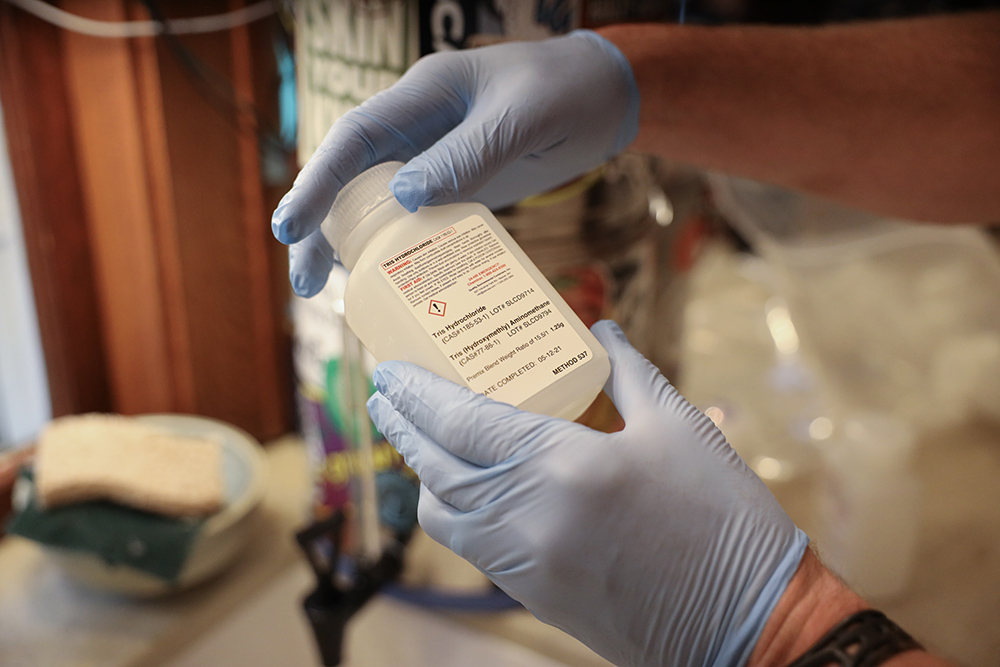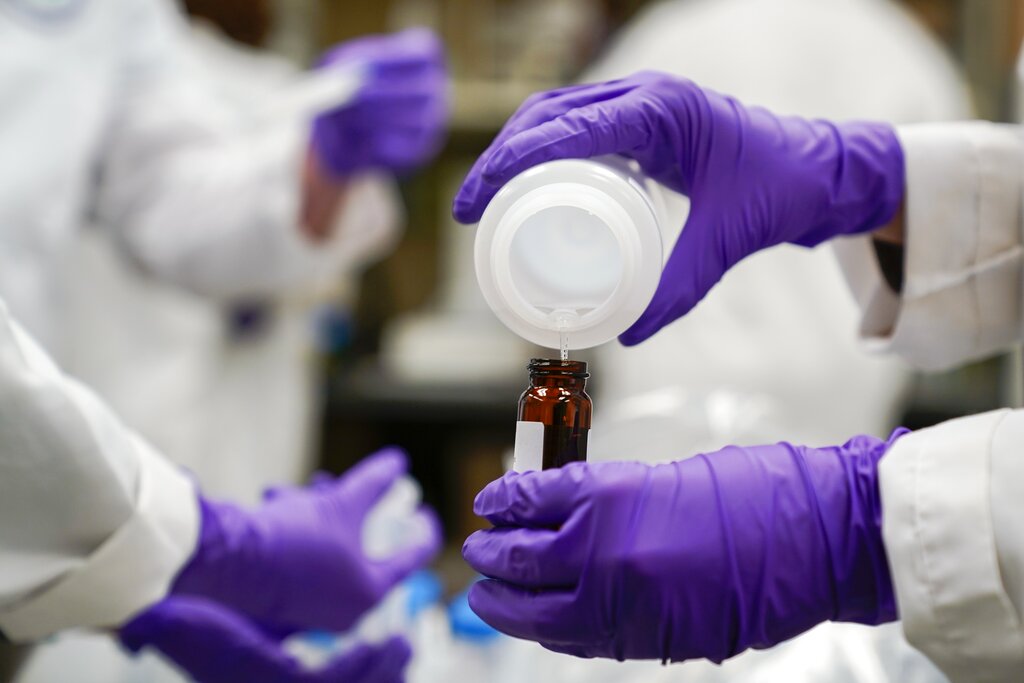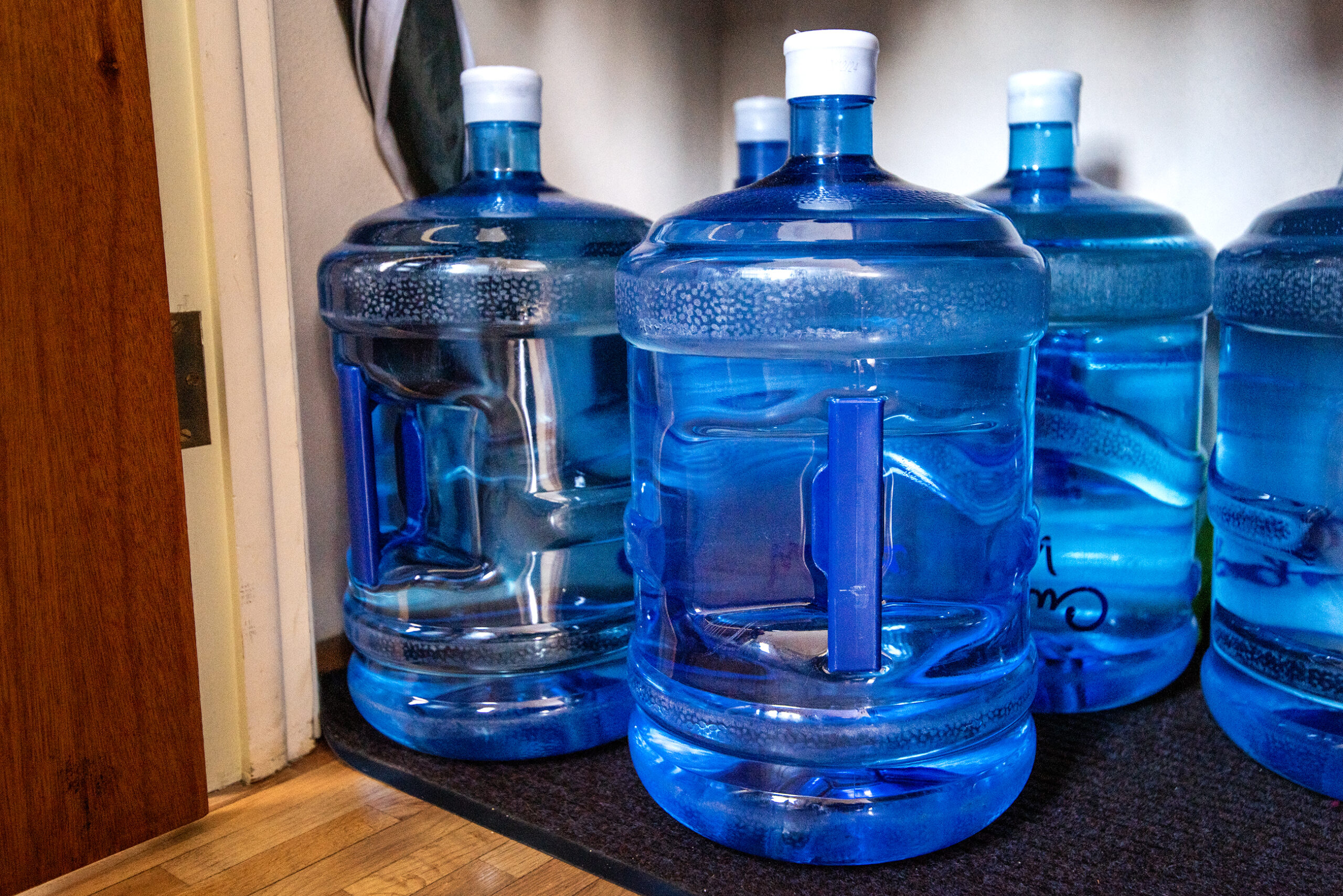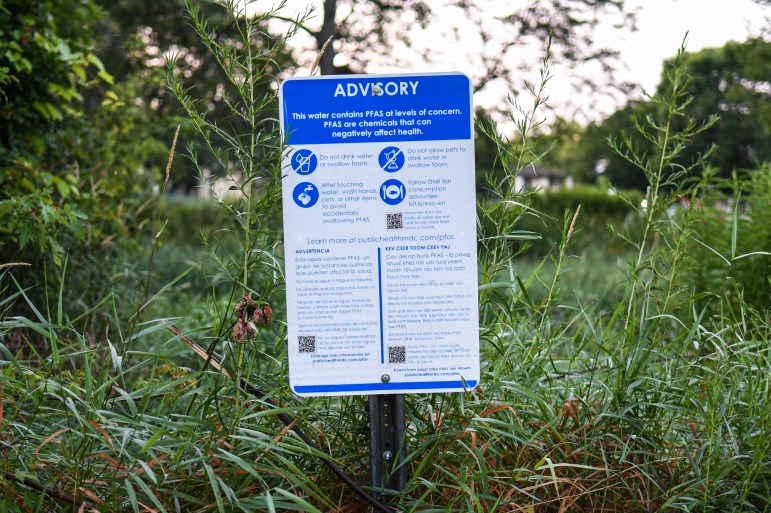A newly released study found close to half of the nation’s tap water may be contaminated with harmful forever chemicals known as PFAS. Now, one environmental advocacy group is sharing its findings on the best filters for removing the toxic substances from drinking water.
PFAS, short for per- and polyfluoroalkyl substances, are a class of thousands of synthetic chemicals used in products like cookware, food wrappers and firefighting foam. Research shows high exposure to PFAS has been linked to kidney and testicular cancers, fertility issues, thyroid disease and reduced response to vaccines over time.
The Environmental Working Group is releasing its analysis of water filters that reduce the chemicals as the U.S. Geological Survey recently published the first nationwide study comparing PFAS in tap water from both public and private wells.
News with a little more humanity
WPR’s “Wisconsin Today” newsletter keeps you connected to the state you love without feeling overwhelmed. No paywall. No agenda. No corporate filter.
“What we found there was that exposure to PFAS — it was actually very similar in samples collected from these unregulated private wells and the regulated public supply,” said Kelly Smalling, USGS research hydrologist. “The study also suggested that at least 45 percent of the nation’s tap water could have one or more type of PFAS.”
The study examined water samples from public and private wells at 716 locations nationwide using data from 269 private wells and 447 public water supplies. Those samples were taken between 2016 and 2021. The findings showed the likelihood of exposure to the chemicals was higher near urban rather than rural areas.
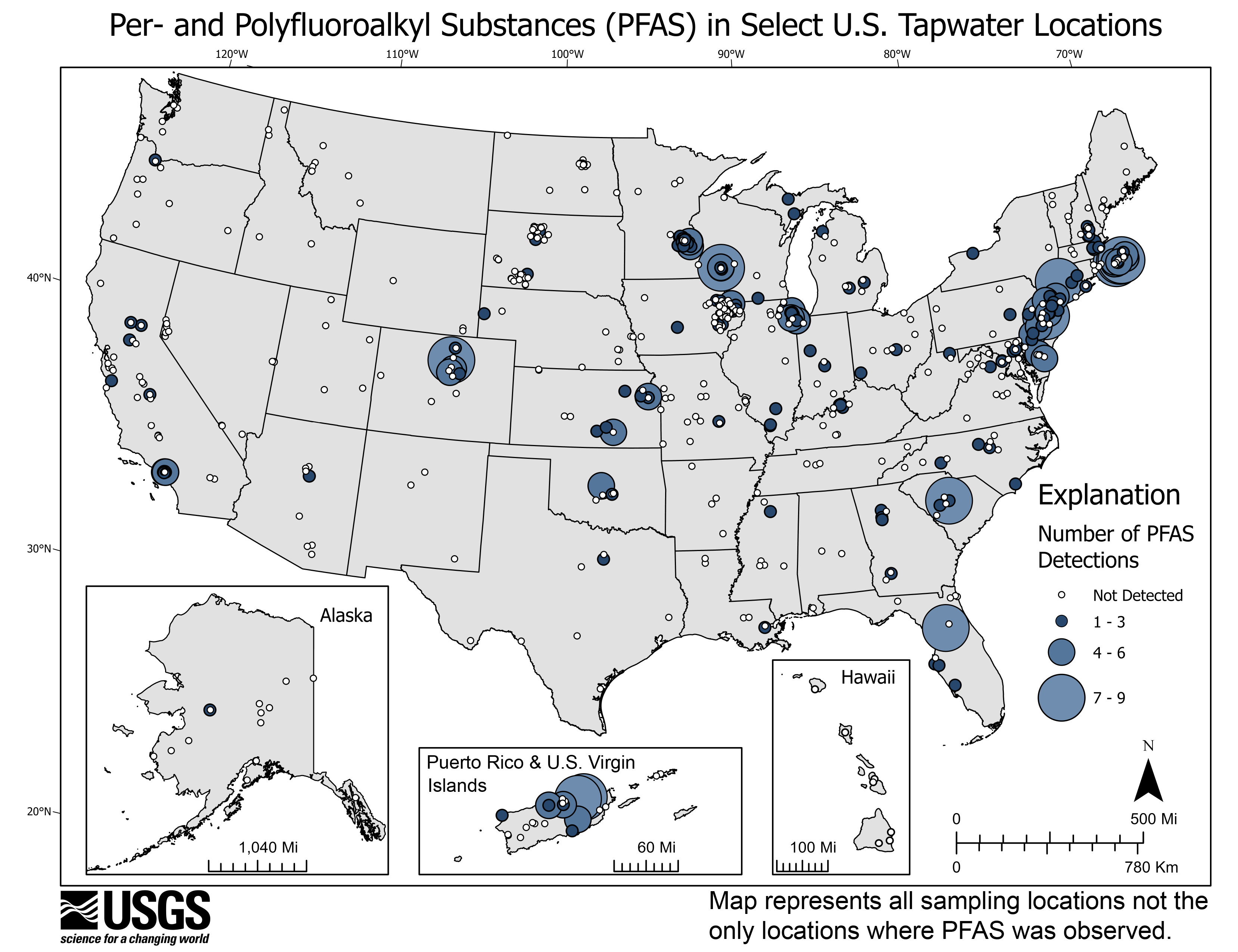
Smalling said the study incorporated eight samples from Wisconsin, including the La Crosse and French Island area that have known PFAS contamination. Samples at those sites had PFAS levels that ranged from undetectable levels to 164 parts per trillion. The federal Environmental Protection Agency has proposed a safety standard of 4 parts per trillion for two of the most widely studied PFAS chemicals in drinking water. Other areas sampled in the state showed no detections of the chemicals.
Sydney Evans, a senior science analyst with the Environmental Working Group, said the study illustrates that PFAS is a huge problem.
“These contaminants never go away. They just spread, and they end up in drinking water,” Evans said.
As part of its analysis, the environmental advocacy group bought 10 filters that claimed to reduce the chemicals in drinking water and tested for 25 individual substances. The filters included household brand names like PUR and Brita.
“The goal for us was to really show in a real world scenario, which water filters out of the 10 that we chose were most effective for reducing PFAS at a real home tap with real tap water,” said Evans.
Evans said the group’s testers used each filter according to the manufacturer’s instructions and flushed taps before filtering 10 gallons of water through each one. The organization tested unfiltered water from drinking faucets and found 10 different PFAS chemicals. The group then compared those results to samples taken from filtered water on the same day. Of the 10, Evans said three water filters reduced PFAS to undetectable levels, and one came close.
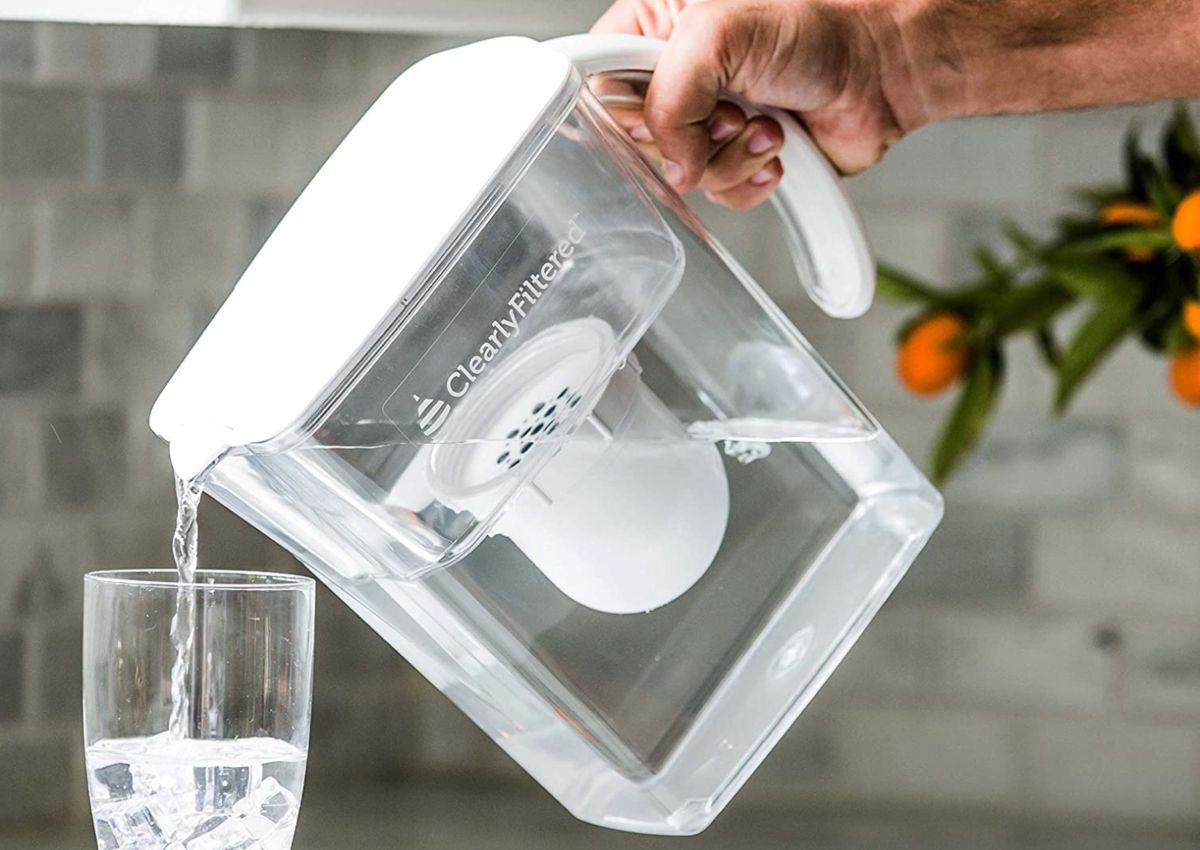
Photo courtesy of EWG
Top three filters for removing PFAS
The Travel Berkey, Clearly Filtered, and ZeroWater filters all removed PFAS chemicals to undetectable levels. That means these filters would meet the EPA’s proposed drinking water standards. The filters also meet the state’s drinking water standard of 70 parts per trillion.
The Travel Berkey water filter had the longest filter life at more than eight years when using 2 gallons each day, but it’s also expensive with an upfront and annual cost of $344. The ZeroWater 7-cup 5-stage water filter was the least expensive of the top three with an initial cost under $25. These filters have a short lifespan of 10 days. The group put its annual cost at $646 when considering the upfront price and cost of 37 replacement filters.
Meanwhile, the Clearly Filtered water pitcher costs about $90 upfront, but it has a lower annual cost to maintain than ZeroWater at roughly $436. While these filters also lasted about five times longer, it took twice as long as some brands to filter water. The group also found it may not be as easy to use for those with limited upper body or hand strength when installing the filter.
Epic Pure water filter is group’s top pick
Environmental Working Group staff say the Epic Pure filter is their favorite because it’s easy to use and refill. This filter removed around 98 percent of PFAS from tap water they tested. At an upfront cost of $70, the filter lasts around 75 days. The group puts its annual cost to maintain at close to $250. That’s less than the annual cost for the three filters that removed all PFAS to undetectable levels.
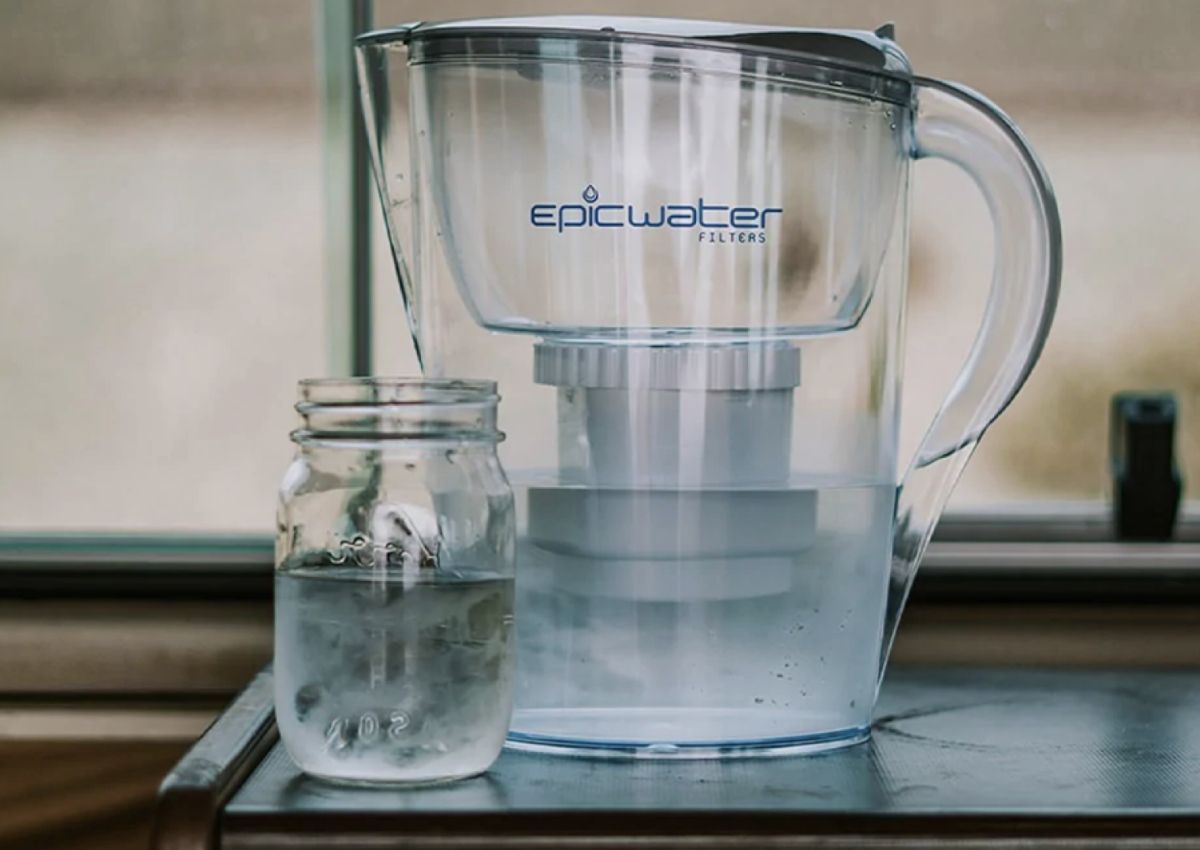
How six other filters stack up from the group’s testing
The remaining six filters tested by the advocacy group removed less than 80 percent of PFAS chemicals. Below is the rate of PFAS reduction for each filter:
- PUR PLUS 7-cup pitcher: 79 percent
- Brita Filter, 6-cup pitcher: 66 percent
- Aquagear Filter pitcher: 65 percent
- Amazon Basics 10-cup pitcher: 54 percent
- Seychelle Gen 2 Dual pH20 Pure water pitcher: 48 percent
- Brita Elite filter: 22 percent
The PUR PLUS filter removed more PFAS, but it was among the slowest for filtering water. The Brita Filter had a low upfront cost and cheap replacement filters, but it was a smaller pitcher.
The Aquagear Filter is a larger pitcher that doesn’t have to be refilled as often, but it may be harder to use than others. The Amazon Basics filter was the least expensive in the first year of use among all those tested by the group, but it was less effective than the Brita filter for a similar price.
The Seychelle filter was one of the least effective filters for removing PFAS that staff tested, and it was also among the most expensive. While it doesn’t have to be refilled often, the group also found it difficult to use. Meanwhile, the Brita Elite filter performed the worst at removing PFAS among the 10 filters tested. However, the group found the filter didn’t seal well, and Evans said that could mean unfiltered water leaked around it.
Agencies work to address PFAS in tap water
While the EPA has proposed limits on some PFAS, Evans noted it will be a long time before any standards are put in place and potentially even longer before treatment systems are installed at affected water supplies. She said the group wanted to give people options on how they can take steps in their home to limit their exposure.
“We don’t think that a home filter is the end-all solution for PFAS,” Evans said. “Not everybody is in a position where they can go out and buy a filter.”
In Wisconsin, the state Department of Natural Resources has tested 613 water systems for PFAS, of which most are municipal water supplies. The vast majority of samples taken fell below the state’s health hazard index of 1 for PFAS, which measures public health concern related to a mix of the chemicals in drinking water. As of last summer, around 450 private wells had been tested for PFAS.
PFAS have been detected in public wells for the cities of Eau Claire, Wausau, La Crosse, Milwaukee and Madison. The towns of Peshtigo, Campbell and Stella are among communities that have detected the chemicals in private wells.
While state standards exist for PFAS in drinking water, regulations are currently lacking for the chemicals in groundwater. Last year, the Natural Resources Board failed to pass limits for around one third of residents who rely on private wells that draw from groundwater. The DNR restarted the process of crafting rules for PFAS in groundwater in December.
The agency plans to take the EPA’s proposed drinking water standards into effect as it develops groundwater limits. Federal regulators have said they hope to issue a final rule by the end of this year or early next.
Wisconsin Public Radio, © Copyright 2025, Board of Regents of the University of Wisconsin System and Wisconsin Educational Communications Board.

